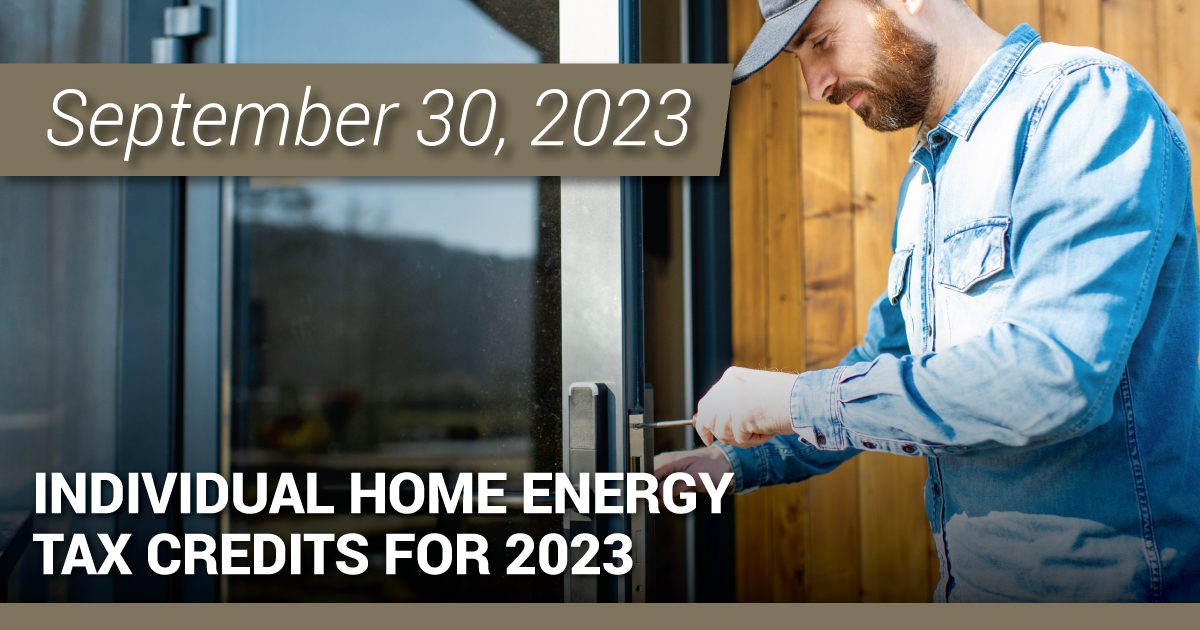Individual Home Energy Tax Credits for 2023

Taxpayers who make home energy improvements starting in 2023 may be able to take advantage of tax credits for a portion of the qualifying expenses. The credit amounts were increased, and the types of qualifying expenses were expanded by the Inflation Reduction Act of 2022.
Who can claim energy credits?
There are two energy-related credits available for qualifying improvements to a home: the Energy Efficient Home Improvement Credit (EEHIC) or the Residential Clean Energy Credit (RCEC); both can be claimed in the tax year that a qualifying improvement is made to a taxpayer’s primary home. A taxpayer’s primary home is where the taxpayer spends most of their time and must be located in the United States.
Generally, a taxpayer may claim these credits for qualified improvements to their primary residence; however, sometimes, a taxpayer may be able to claim energy-related credits for specific improvements to a second home if the taxpayer doesn’t use the second home as a rental property.
What improvements qualify for the EEHIC?
Taxpayers can claim an Energy Efficient Home Improvement Credit for many home improvements that meet specific energy efficiency requirements. This includes:
- Exterior doors,
- Windows, skylights,
- Insulation materials,
- Central air conditioners,
- Heat pumps and heat pump water heaters,
- Biomass stoves and boilers, and
- Home energy audits
Generally, the maximum credit a taxpayer may claim each year is:
- $1,200 for energy property costs and specific energy-efficient home improvements, with limits on doors ($250 per door and $500 total), windows ($600), and home energy audits ($150)
- $2,000 annually for qualified heat pumps, biomass stoves, or biomass boilers.
The actual amount of the taxpayer’s credit is a percentage of the total cost of the improvements (including installation charges) in the year of installation. In certain circumstances, the credit may be capped. The EEHIC has no lifetime dollar limit, and a taxpayer can claim the maximum annual credit every year they make eligible improvements until 2033.
The EEHIC is not a refundable credit and cannot be carried over to another tax year. So, it may make sense to take a large project, like replacing windows, and do some of it over several years. Taxpayers can find more information about the energy efficiency requirements and a list of qualified improvements on energy.gov.
What expenses qualify for the RCEC?
Taxpayers who invest in renewable energy for their primary home may be able to claim the Residential Clean Energy Credit. Qualified RCE credit improvements include:
- Solar, wind, and geothermal power generation,
- Solar water heaters,
- Fuel cells, and
- Battery storage
Generally, the credit amount is a percentage of the total cost of the improvement in the year of installation. For tax years 2022-2032, the percentage is 30%; generally, there is no annual maximum or lifetime limit. However, there are certain limits for fuel cell property.
